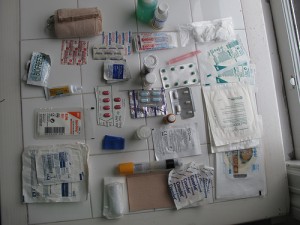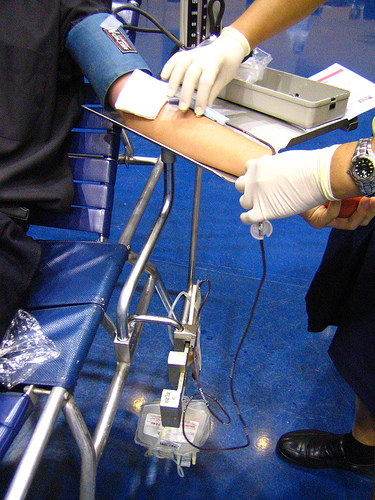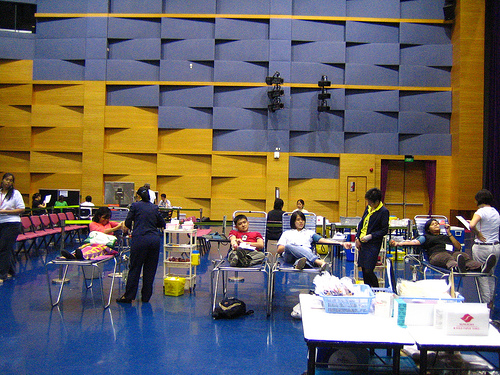Several nights ago, right after lecturing my younger son James about keeping fingers away from sharp objects, I sliced my thumb open on the lid of a freshly opened can of tuna.
I made a run for the bathroom and held my profusely-bleeding hand over the sink while James trailed in saying, “Mommy, you really should learn to be more careful.”
I really should, indeed. I’m not at all sure how this even happened. What I do know is that the amount of blood was startling. It was a deep cut, right across the soft padded part of my thumb. I wasn’t really sure what to do about it. I had a full box of Band-Aids, but I didn’t think they would do a great job of stemming the flow. I was out of gauze pads, and George had surreptitiously used up all of my surgical tape to stick bits of paper to other bits of paper.
As I stood at the bathroom sink stupidly watching my blood go down the drain, George – eight years old and autistic – came in with the box of Band-Aids, that he had gotten out of the cupboard without anyone asking him to. He started unwrapping Band-Aids and wrapping them around my thumb. They were instantly getting soaked, but George kept at it, adding Band-Aids down the entire length of my thumb. Eventually, my thumb was trussed up in about twenty Band-Aids. It looked absolutely ridiculous, but the bleeding was contained.
George then added an extra-special touch: he took my hand, and lightly kissed my Band-Aided thumb.
It’s hard to say what aspect of this whole incident is most significant.
George, autism and all, responded immediately and appropriately to what he saw as an emergency. This child, who gets totally freaked out at the sight of blood, showed no more than a little bit of mild distress. He managed to stay completely calm as he bandaged me up. He quietly took charge of the situation in a way that astounded me. The kiss demonstrated tenderness and empathy – just the kind of bedside manner that someone with a fresh injury needs.
It makes me think that I should start teaching him First Aid. If this incident is anything to go by, George seems to have that instinct of calmly wanting to help when someone gets hurt. It could serve us well to empower him to help in situations like this, starting on a small scale, of course. I wouldn’t expect my eight-year-old to perform CPR, but if he had the tools to handle minor First Aid emergencies, that could be good not only for his potential patients, but for himself.
Do you think George’s response to this situation might be evidence of some instinct that he naturally has? What opportunities do you think might arise from this?
(Photo credit: http://www.flickr.com/photos/honan/3779689068/)












